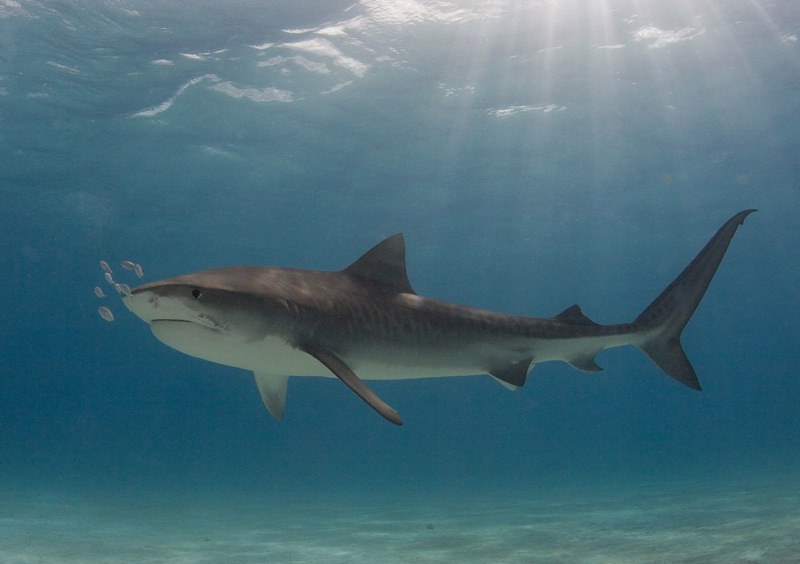When you hear the word “shark,” do you immediately think of the man-eating Great White in the iconic 70s movie Jaws? Well, you’re not alone!
But did you know that there are thought to be at least 500 species of sharks in the world’s oceans? Sharks range in size from 40-foot-long, filter-feeding Whale sharks to seldom-seen Dwarf Lantern shark that measures less than the length of a human hand!
These ancient creatures have graced the seas for over 450 million years. However, thanks to human activity, it’s estimated that 75% of shark species are now endangered.
Read this guide to learn more about these beautiful creatures and find out what you can do to help save them.
Shark Etymology
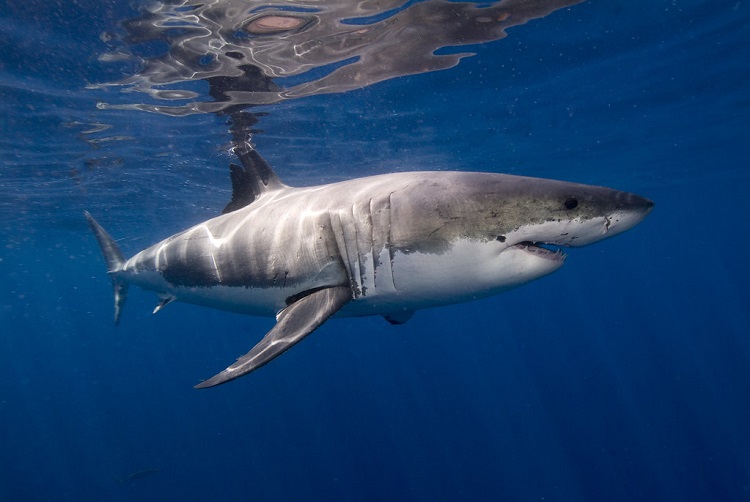
Up until the 16th century, mariners referred to all sharks as “sea dogs.” Interestingly, today a few shark species are called the porbeagle or spiny dogfish in a nod to the terminology of old.
Where the word “shark” comes from is uncertain. However, it most likely originates from the Dutch word “shurk,” meaning a villain, specifically a loan shark, card shark, or someone who preys on others.
The word was later used to describe the fish because of its perceived predatory nature.
Evolutionary History
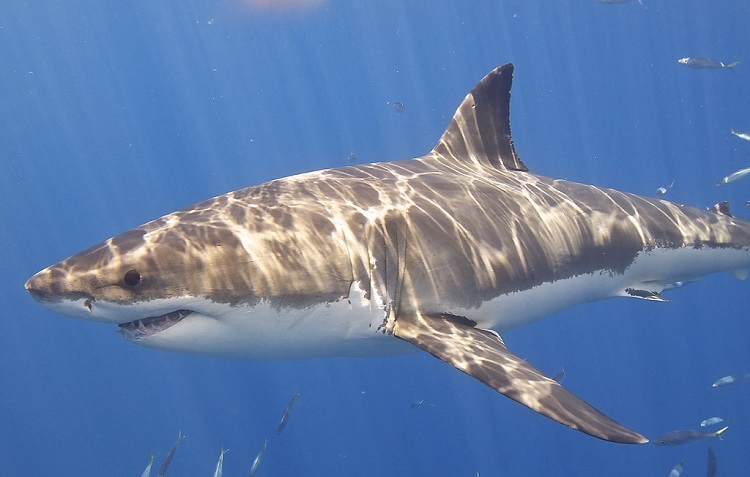
Scientists widely agree that sharks have been around in our oceans for over 400 million years or even more, making them 200 million years older than dinosaurs! Who knew?
Early sharks most likely descended from primitive, leaf-shaped, boneless fishes. Those fish then further evolved into the two primary groups of fish we see today:
- Bony fish (Osteichthyes)
- Cartilaginous fish (Chondrichthyes)
Sharks are Chondrichthyes, along with rays, skates, and chimaera.
Fossil Record
Fossil records show that there were over 3,000 different shark species at one time. However, the shark has a skeleton made from cartilage, not bone, so the fish completely decomposes without a trace. All that’s left behind are the animal’s teeth, fin spines, and dermal denticles.
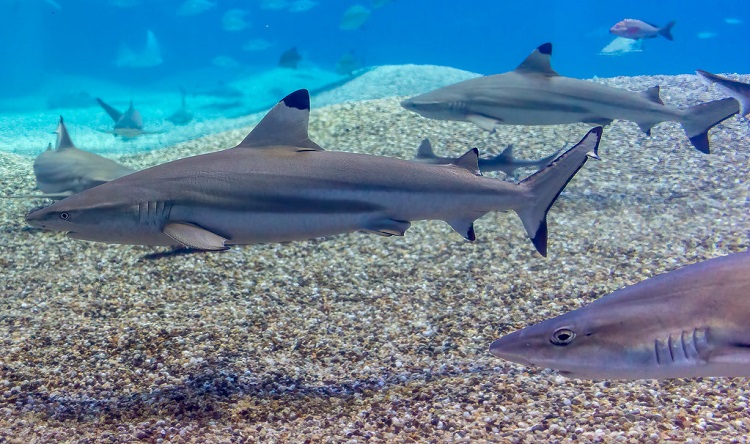
Some shark species that lived over 150 million years ago were pretty much identical to the sharks we see today. For example, Cladaoselache had a mouth very similar to modern Megamouth sharks and Devil frays.
In the prehistoric oceans, shark ancestors dominated the top of the food chain, just as they do today. However, back then, massive marine reptiles, including Plesiosaurs and Mosasaurs, shared the spoils.
Today, only the sharks remain, which must be a big relief to anyone who ventures into the shark-infested waters of our deep oceans!
Early Extinction Event
Despite their continued existence today, an early mass extinction event some 19 million years ago wiped out most shark species, along with the dinosaurs. Although many shark species survived, modern sharks lack the diversity of their distant ancient relatives.
Shark Taxonomy and Classification
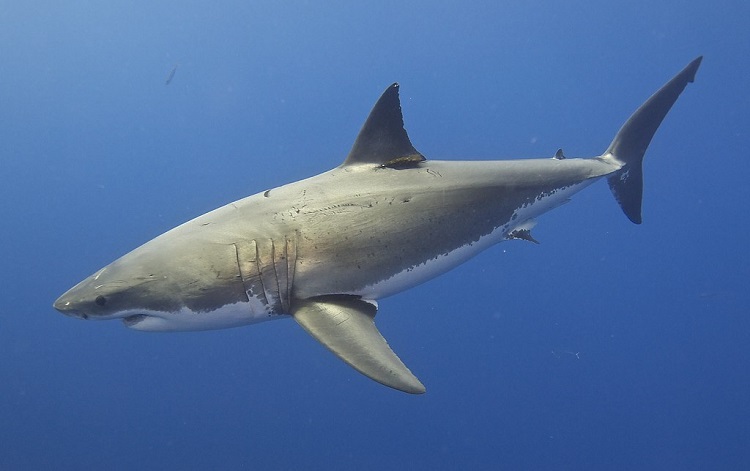
Taxonomy is the area of science that classifies and names the different shark species, helping us to understand their role within the modern ecosystem.
Kingdom
Sharks belong to the Kingdom Animalia, just like you and me!
Phylum
Sharks are classified in the Phylum Chordata and the sub-phylum Vertebrata, meaning they have vertebrae, spinal cord, and notochord.
Class
Sharks are Chondrichthyes, a class that includes all fish with cartilaginous skeletons. The class is divided into two further groups; Holocephali (chimaera) and Elasmobranchii (sharks, rays, and skates).
Order
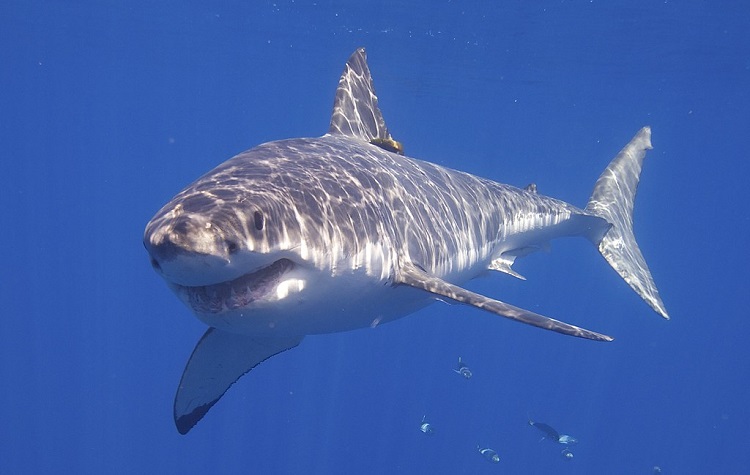
Elasmobranchii is divided into two sub-orders: the now-extinct Cladoselachimorpha and the Euselachii.
Euselachii has 13 orders, only ten of which still exist.
- Rajiformes – Skates and rays
- Hexanchiformes – Frilled and Cow sharks
- Echinorhiniformes – Bramble sharks
- Squaliformes – Dogfish sharks
- Pristiphoriformes – Sawsharks
- Squatiniformes – Angelsharks
- Heterodontiformes – Bullhead sharks
- Lamniformes – Mackerel sharks
This group includes commonly-seen large sharks, such as the Basking shark, White shark, and Shortfin Mako shark.
- Orectolobiformes – Carpetsharks
This group contains species, including Whale sharks and Wobbegongs
- Carcharhiniformes – Ground sharks
Hammerheads and Reef sharks belong to this group.
Family
All shark species belong to different families. Some families contain only one or two shark species, such as the Cetorhinidae family, which includes only the Basking shark.
Surprising Shark Facts
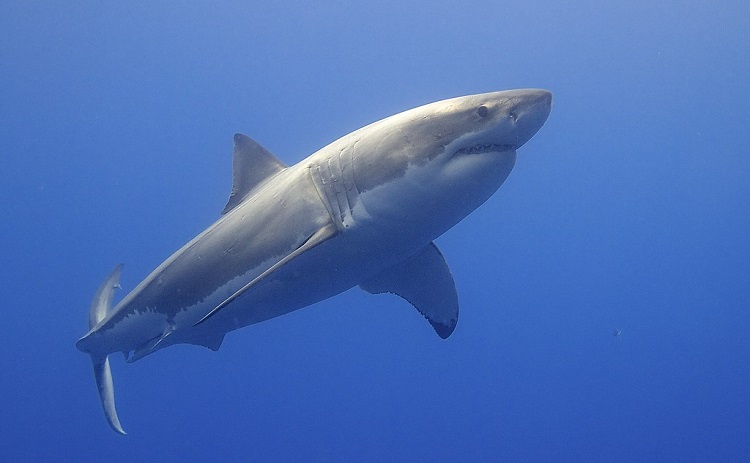
Sharks are amazing creatures! Here are a few surprising shark facts you might not know.
Sharks Have Extremely Good Eyesight
Most shark species have excellent night vision and can see in color.
The rear of the shark’s eyeball has a layer of tissue called a “tapetum” that enables the shark to see extremely clearly in very poorly lit environments.
Shark Skin Feels Like Sandpaper
A shark’s skin is covered with tiny teeth called placoid scales or dermal denticles. Those scales help to reduce friction as the shark swims and give the skin a sandpaper-like feel.
You Can Put a Shark Into a Trance
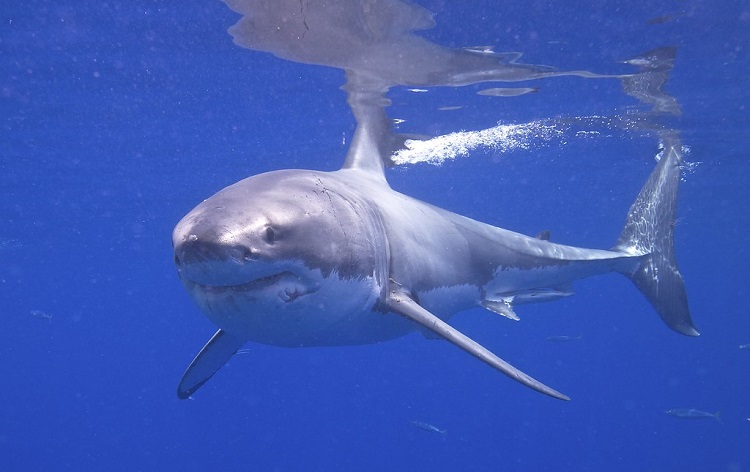
It’s possible to place a shark into a state of tonic immobility by flipping the animal upside down. That’s how scientists pacify some oceanic shark species for tagging and other research.
How Do Scientists Tell a Shark’s Age?
Shark vertebrae contain translucent and opaque rings, which scientists count like tree rings to determine the shark’s age.
For example, if the vertebrae have 12 bands, the shark is assumed to be 12 years old. However, that varies between species, and the deposition rate can change over time.
Whale Sharks Have A Unique Spot Pattern
A Whale shark can grow up to 60 feet long and weigh as much as 40 tons. Researchers can identify every Whale shark by its pattern of spots, which is as unique as your fingerprint!
Sharks Range and Habitat
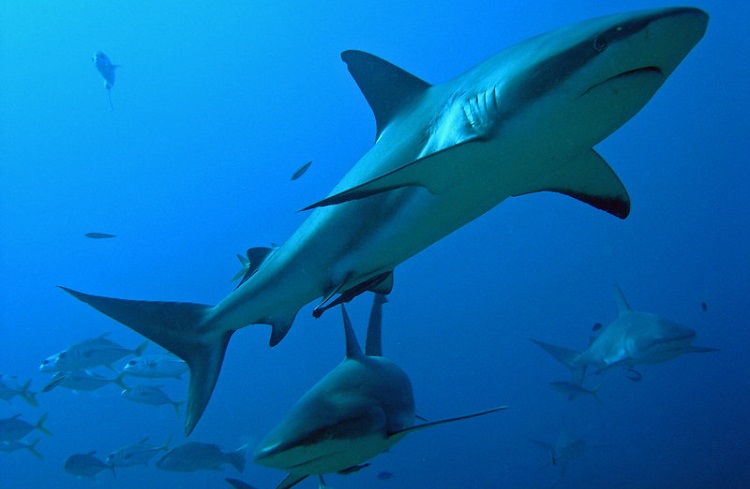
The shark’s range extends to every ocean in the world. These remarkable creatures can be found under the Arctic sea ice, in shallow waters, in the open ocean, and on the ocean floor.
Some sharks can even live in freshwater. For example, the Bull shark has been known to travel over 1,000 miles up the Mississippi River as far as the state of Illinois until dams and locks prevented that.
Migration
Shark migration is not well-understood. However, it is known through tagging individual animals that Blue sharks covered 2,700 miles in just four months.
Sharks generally migrate in search of food, to breed, and move to warmer or cooler waters, depending on the species.
Shark Anatomy and Physiology
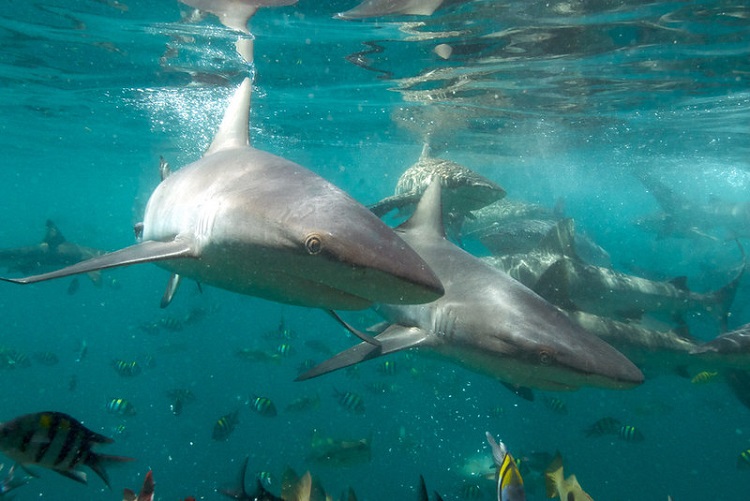
Over millennia, sharks have adapted to have a range of features that make them ideally suited to their environment and habitat.
Skeleton
The shark’s skeleton is made from cartilage, making it strong but lighter and more flexible than bone.
That lightweight skeleton enables the shark to float and makes moving around more energy-efficient, and a flexible cartilage skeleton enables the animals to twist and turn quickly and efficiently.
Respiration
Some sharks must constantly swim to keep water containing dissolved oxygen over their gills. However, other sharks use a pumping motion of the pharynx to do that, enabling them to rest on the ocean floor and continue breathing.
Buoyancy
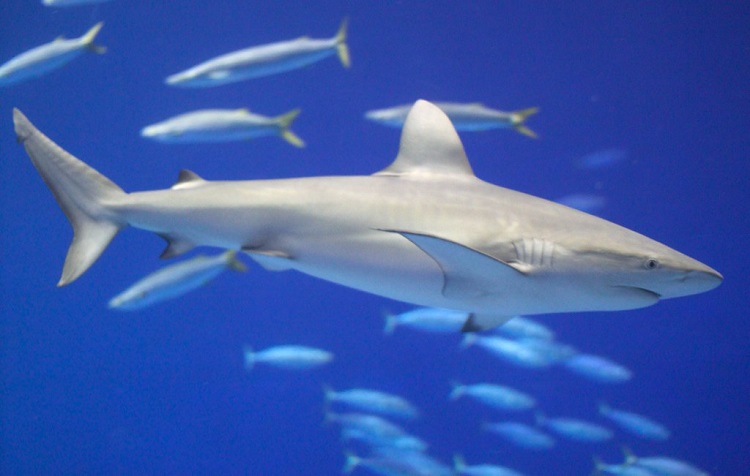
As previously mentioned, the shark’s light skeleton helps them to remain buoyant. So, how else do these awesome creatures stay afloat?
In some types of sharks, their liver accounts for 25% of the creature’s entire body weight! Sadly, shark liver oil is in massive demand for use in making cosmetics, making the shark vulnerable to human predation.
Some sharks, such as the Sandtiger shark, can “hover” by snatching gulps of water at the surface and trapping air in their stomach. The sharks eliminate that excess air by blowing bubbles through their mouths or passing gas! Ew!
Other species, including the Whitetip Reef shark, simply nap on the ocean floor, moving on again using their tail to propel themselves forward.
Thermoregulation and Osmoregulation
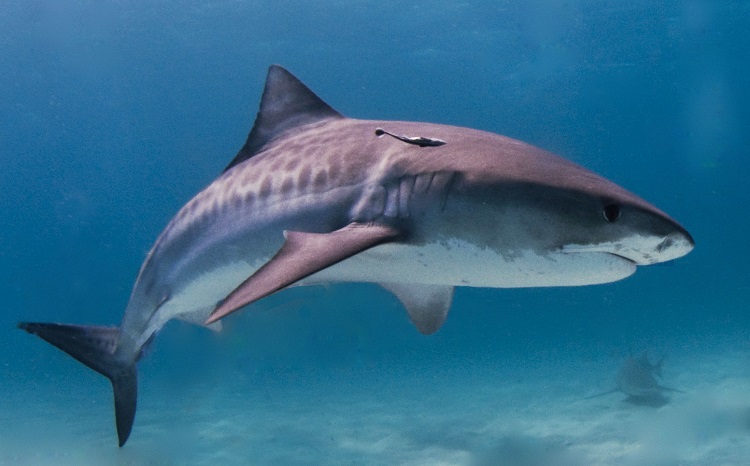
Most sharks are cold-blooded, meaning their body temperature changes with their immediate environment.
However, Mackerel sharks, including porbeagles, White sharks, Shortfin Makos, Salmon sharks, and Longfin Makos, can warm their blood. That retained warmth makes these sharks highly-efficient predators.
Sharks lose much of their body heat through their gill slits, so to minimize that, Mackerel sharks have heat-exchanging capillaries called rete mirabiles.
Blood vessels bearing warm, deoxygenated blood pass in opposite directions to vessels carrying cold oxygenated blood, exchanging heat as they do so and effectively warming the muscles.
Incredibly, Mackerel sharks can have a body temperature of 50°F higher than that of the ocean around them.
Digestion
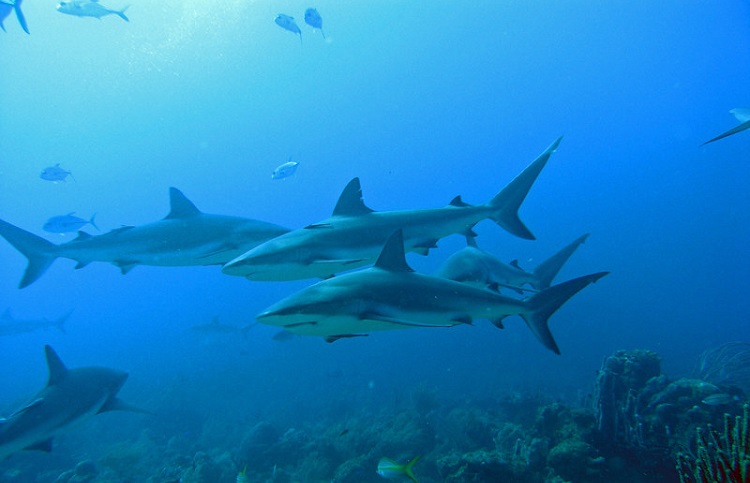
A shark’s intestines are compact and short, with a surface area that’s increased by coils and internal valves in many forms.
The increased surface area of the intestine slows the passage of food, speeding up the rate at which nutrients are absorbed into the animal’s blood.
Fluorescence
Swell sharks and Chain catsharks live in the deep, dark waters of the eastern Pacific and western Atlantic, respectively.
The sharks both appear unremarkable at first glance, being various shades of dull brown. However, when placed under blue light, the sharks fluoresce bright green!
Only blue light penetrates the ocean depths where the sharks live, and it’s thought that the green bio-fluorescence helps to protect the sharks against attack by certain species of bacteria.
Dentition
Sharks are born with a set of fully-functional teeth that are constantly replaced approximately every two weeks throughout the animal’s life.
Some sharks are filter feeders with rows of tiny teeth that the creature uses to eat small fish, jellyfish, and invertebrates. Other sharks have flat, crushing teeth that are used for crushing shellfish. Sharp serrated teeth, such as those seen in Great White sharks, are perfect for devouring large prey, such as seals.
Like humans, some shark species change their teeth to suit their changing diet as they age.
Fins and Swimming
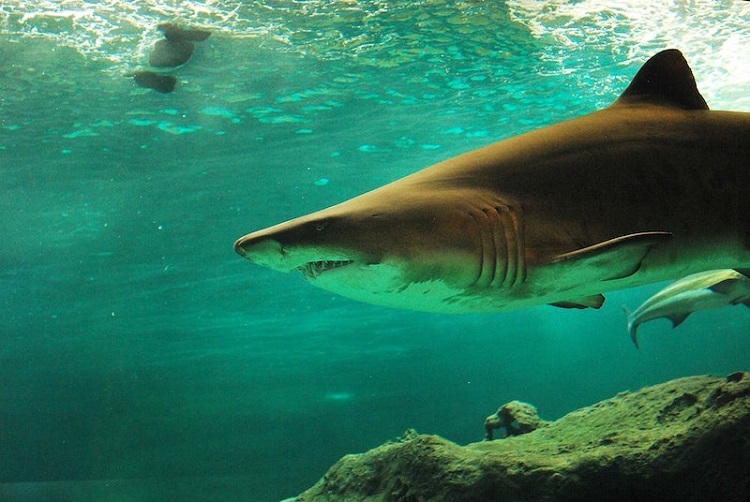
The shark’s fins give it stability and balance in the water. Many sharks have a large, characteristic dorsal fin used for balance.
Pectoral fins are used by the shark for steering and raising the animal out of the water, and the tail fin, also called the caudal fin, is used to propel the shark forward through the water.
Interestingly, fast-swimming sharks tend to have short, crescent-shaped tails, while slow-swimming types have long, thin tails.
Tragically, the shark fin trade is in demand for shark fin soup, leading to the decline of many species through overfishing.
Muscles
Sharks have red and white muscle tissue. Red muscle tissue breaks down the fat in the shark’s body, enabling the animal to swim for long periods. White muscle is used by the shark for fast spurts of swimming and works by breaking down glycogen and converting it into energy.
The shark contracts long bundles of muscle fiber along the top of its body to propel it powerfully through the water. The more pronounced the muscle contractions, the faster the shark can swim.
To swim more economically, the shark uses a series of muscle contractions to build up speed before stiffening its body and gliding through the water.
Shark Lifespan
A shark’s lifespan depends largely on the species.
Most species live between 20 to 30 years, although the Greenland shark is thought to have a lifespan of an incredible 250 to 500 years!
Shark Senses
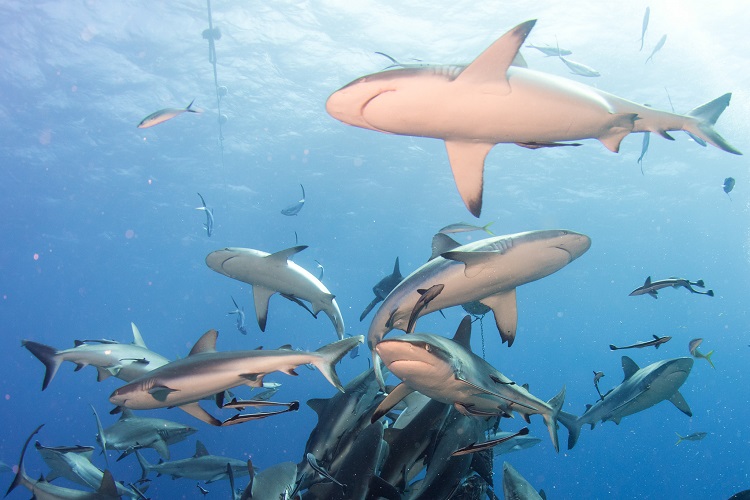
Sharks have the same five senses as you, plus two incredible extras!
Smell
A shark’s sense of smell is critical to its survival, so it’s no surprise to learn that up to two-thirds of the weight of the animal’s brain is dedicated to its olfactory senses.
Imagine placing one teaspoon of blood into an average-sized swimming pool and being able to smell it from a huge distance. Well, some species of sharks can do exactly that!
Sight
Sharks’ eyes are positioned on the side of their heads, enabling them to see in all directions, but their vision becomes more acute once they’re 50 feet away from the object.
In addition, sharks’ eyes are specially adapted to provide excellent vision in poor light and deep water.
Sound
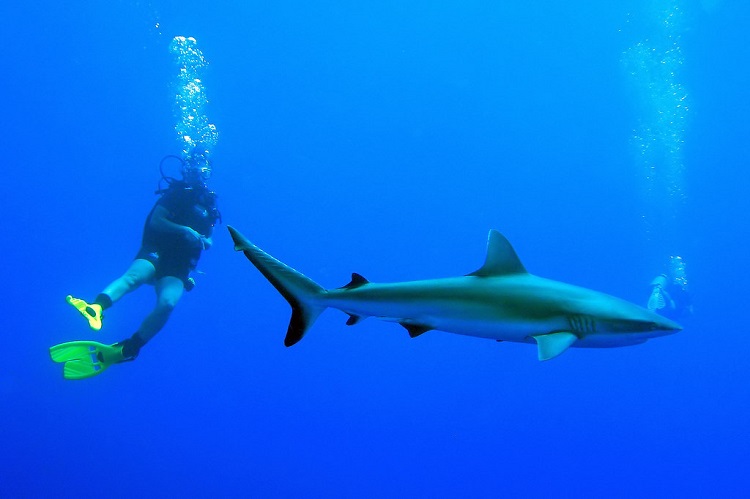
Sharks have an exceptionally acute sense of hearing and can detect low-frequency sounds of injured, vulnerable prey.
The animal’s ears are behind the eyes on either side of its head, appearing as two tiny holes. Sound waves vibrate tiny hairs inside the shark’s ears, and the animal’s brain interprets those vibrations into sounds.
Touch
Some sharks use barbels around their mouths when searching for prey. In addition, their teeth and skin have millions of sensitive nerves.
Taste
One sense that probably accounts for the relatively high survival rate of shark attack victims is the shark’s poor sense of taste.
Often, sharks have a “test bite” of an item of potential food to see if it’s to their taste, spitting out the food if they don’t find it palatable. In many shark attacks, the victim is bitten and then released, presumably because the surfer or swimmer doesn’t taste good!
Electroreception
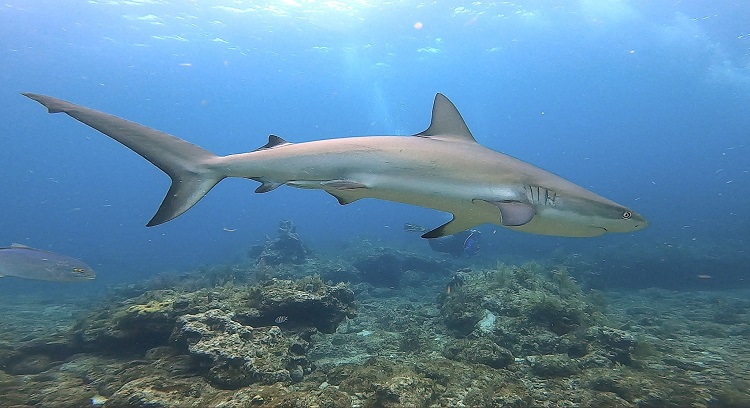
The sharks’ electroreception or electro-sensory system is used by the shark to detect the faintest of electrical fields.
Those electroreceptors reside within jelly-filled organs known as the ampullae of Lorenzini, enabling the shark to detect the tiniest of electrical fields, including muscle contractions in their prey.
In addition, the ampullae of Lorenzini enable the shark to navigate during migration by aligning them with the earth’s geomagnetic field.
Lateral Line
Like many fish species, the shark has a lateral line that acts as an early warning sign by alerting the animal to changes in water pressure. The lateral line enables the shark to navigate and gives it spatial awareness, too.
The lateral line comprises a row of tiny pores running along the shark’s side from its nose to its tail. The shark’s movement causes waves that bounce off solid objects, enabling the animal to make a pressure map of its environment.
What Do Sharks Eat?
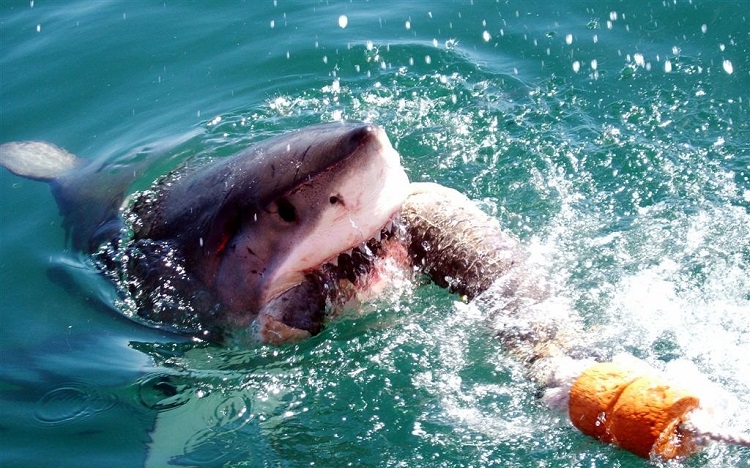
Sharks are carnivores, eating pretty much anything, although their diet varies somewhat between species, habitat, and prey availability.
However, sharks typically eat the following:
- Crustaceans
- Mollusks
- Fish
- Other sharks
- Marine mammals, such as seals
- Turtles
- Sea snakes
Some sharks, such as Tiger sharks, also eat carrion and seabirds that they snatch from the water’s surface. Other sharks, including Basking sharks, are harmless filter feeders, eating plankton.
Predator and Prey Relationship
Usually, sharks prey on the weak, sick, or young since those animals are easier to catch and kill than healthy fit specimens.
Reproduction and Parenting
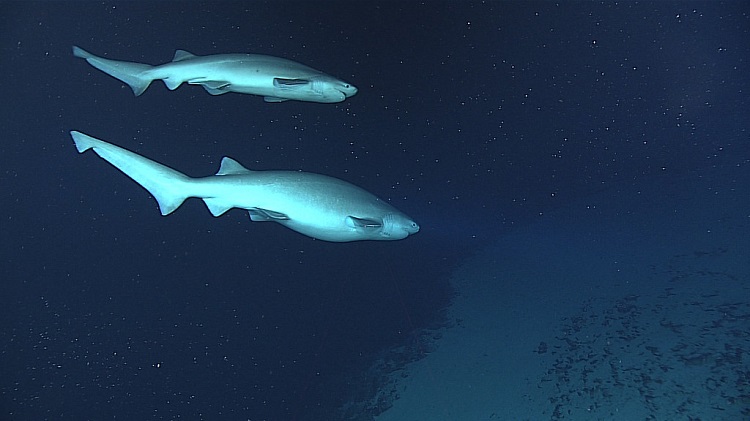
Depending on the species, sharks have several methods of reproduction.
Egg-Laying (Oviparity)
Some sharks produce eggs, which appear encased in a tough egg case. Often those eggs can take between six and nine months to hatch. The embryo feeds on the egg yolk during incubation, finally emerging as a fully formed juvenile shark.
I remember wandering along the beach as a child and finding empty egg cases. My dad told me the eggs were “mermaids’ purses,” although I never found any coins or valuable treasure inside them!
Ovoviviparity
Some sharks carry their eggs inside their bodies for protection from predators. The baby sharks hatch inside the female, emerging as fully-formed juveniles.
In some species, the shark pups are born inside the mother, where they feed off unfertilized eggs.
Live Birth (Vivparity)
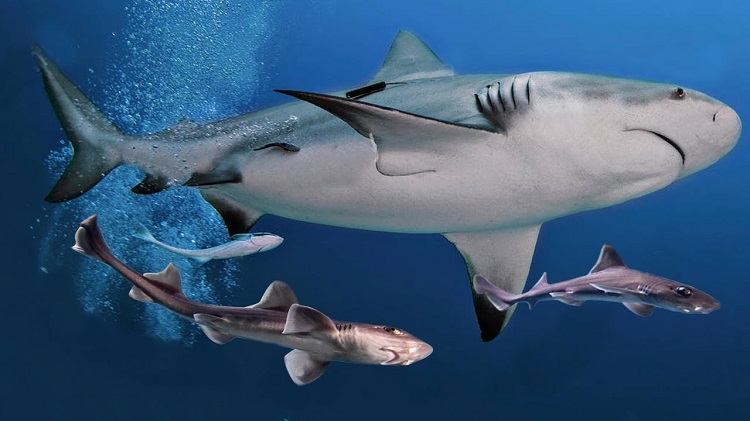
Viviparity sees the baby shark developing inside its mother, getting the nutrition and oxygen it needs from the mother via an umbilical cord, just like a mammal.
When live sharks are born, they are totally independent and fend for themselves.
Parthenogenesis
Some female sharks, including Zebra sharks, Blacktips, and Bonnetheads, can reproduce without mating in a phenomenon called parthenogenesis.
Nurseries
Many sharks lay their eggs or give birth in safe nursery areas with plenty of food for the developing pups.
Once the birth or egg-laying has taken place, the female shark’s parental duties end and the pups are left to go at it alone.
Behavior
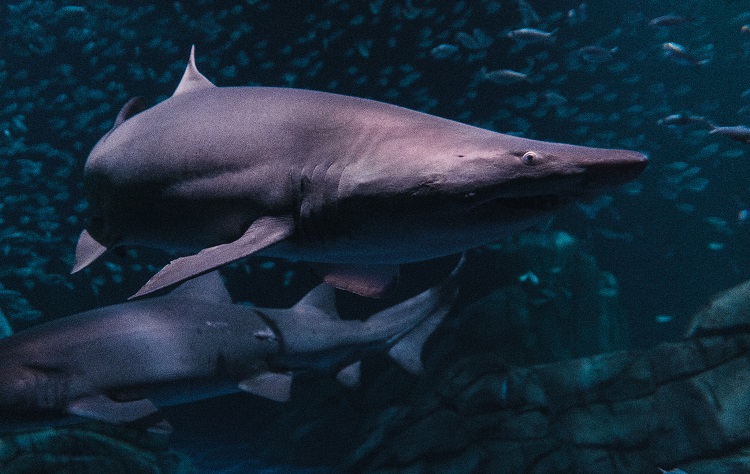
Although most people imagine sharks as solitary hunters roaming the oceans in search of food, many species gather in large groups to breed or exploit food bounties. For example, Hammerhead sharks often gather in their hundreds to exploit plentiful food sources.
There are cross-species hierarchies too, where more dominant species bully weaker individuals of the same size.
Sharks’ Relationship With Humans
Here is an overview of the relationship between shark populations and humans.
Shark Attacks
Many people have an irrational fear of sharks, largely thanks to several books and cult movies, including “Jaws” and a handful of seemingly unprovoked attacks.
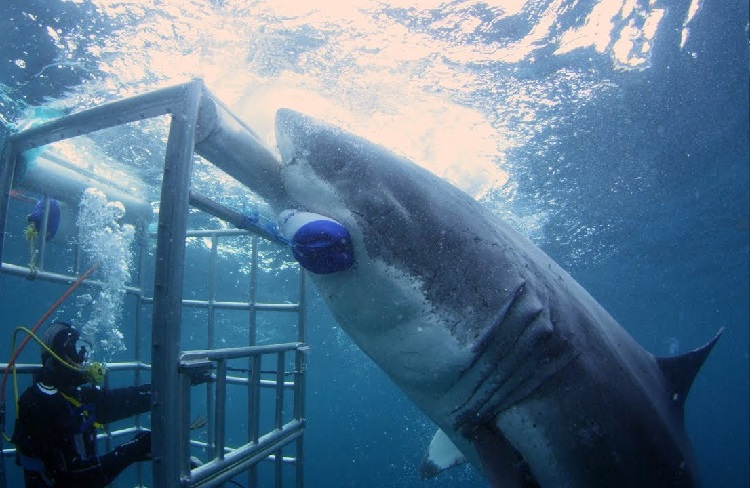
However, only a few shark species are dangerous to people. In fact, according to shark attack statistics, only four species have been responsible for a large number of fatal attacks, those being the following.
- Great White shark
- Oceanic Whitetip shark
- Tiger shark
- Bull shark
All these sharks are large, powerful carnivorous hunters that often mistake swimmers or surfers for their preferred prey of seals and sea lions. Many times, all these species have been filmed without using a protective cage.
In Captivity
Some sharks have been kept successfully as exhibits in large public aquariums, including a Whale shark that resides in Georgia Aquarium.
That said, sharks are not suitable candidates for life in a home aquarium, as most grow too large or require too much space.
Are Sharks Endangered?
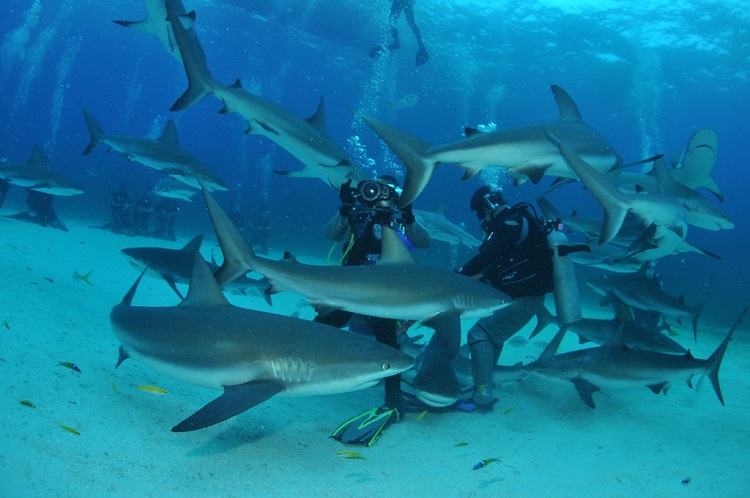
Shark numbers globally are in decline, with many species listed as critically endangered or threatened by the IUCN.
One scientific research study suggests that during the last 50 years, shark numbers have declined by over 70%. But why?
Sharks grow pretty slowly, taking years to reach breeding age and producing relatively few pups. That makes sharks highly vulnerable to exploitation.
Threats and Conservation Status
Human activities are the primary, significant threat to shark numbers worldwide.
Shark Fin
Despite conservation measures, there’s a growing demand in Asia for shark fins to make soup and for their meat.
It’s estimated that around 100 million sharks of different species are killed annually for their fins.
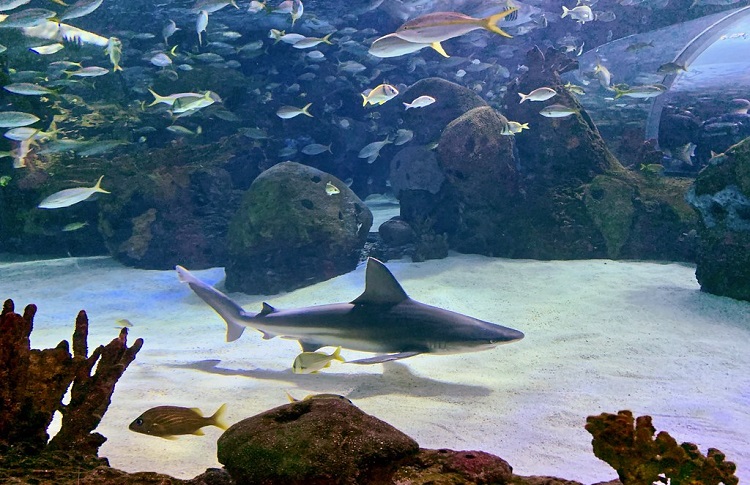
Overfishing
Controls on shark fishing do nothing to reduce the number of sharks taken, and as a result, many are considered vulnerable or endangered species. In fact, 17 out of 39 Pelagic sharks are facing extinction.
Byfishing also accounts for many sharks. Longline fishing techniques often catch thousands of sharks when the fisheries are actually targeting billfish and tuna. However, shark finning is viewed as a valuable source of extra income.
Gill nets and tuna purse seiners are other deadly traps for sharks, dolphins, whales, and turtles.
Environmental Damage
Because of damage to marine life, including coastal coral reefs, many sharks and rays living there are threatened with extinction.
What is the WWF Doing?
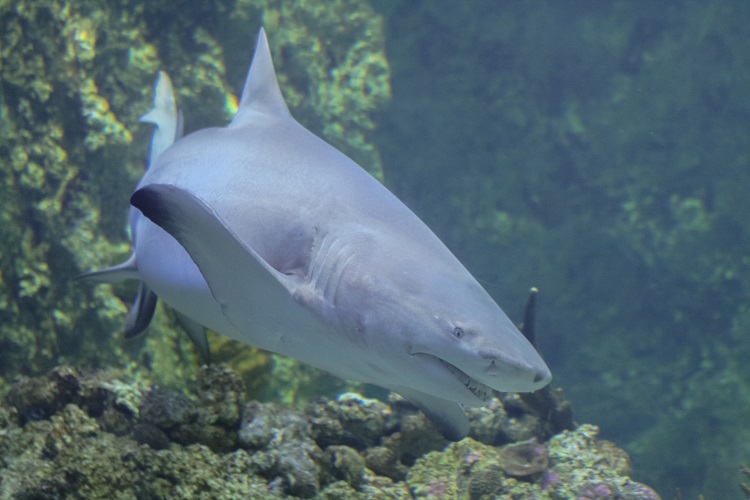
The WWF is fighting to save sharks through TRAFFIC, and multi-lateral trade agreements with shark fisheries worldwide to monitor and regulate the shark fin and meat international trade and reduce demand.
How Can You Help?
You can help to save sharks by symbolically adopting a shark through the WWF’s website.
Your donation will help fund valuable research into shark numbers and behavior, as well as contribute toward the WWF’s efforts to raise awareness of the shark’s desperate plight.
Final Thoughts
I hope you enjoyed our information guide to sharks. If you did, please take a moment to share the article and spread the word that these ancient, magnificent creatures are not all bad, and they need our help to survive.
Did you take action to save sharks? Tell us what you did in the comments box below!


